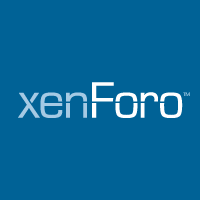jmh33
Gold Member
- Joined
- Mar 16, 2003
- Messages
- 11,667
The BladeForums.com 2024 Traditional Knife is available! Price is $250 ea (shipped within CONUS).
Order here: https://www.bladeforums.com/help/2024-traditional/
Incorrect. The logic doesn’t follow at all. Each of the things you mention are things that would be noticed in normal, and expected use, without any modification on the part of the consumer.According to such logic, none of us should care about blade centering, a bit of blade play, a rough action or uneven grinds because one of this significant affects performance.
This on the other hand is exactly the point. If the user is modifying the end product to expose something that would normally not be exposed, they cannot reasonably expect the maker to accommodate for that.Yeah, I think a coated knife was never supposed to be stripped of the coating. That’s a user modification beyond normal usage of the knife.
I inherited an Esee Izula from a housemate that moved out. It was pink. The pink had to go. After removing the awful pink powder coating, I was further appalled at the roughness of the finishing underneath, grinding lines nearly 1/32” deep in some places on the face of the blade and a little bit of a bulge on one side of the flat grind. I’m in the process of smoothing it out with some diamond stones, and actually somewhat surprised at how easy it is to remove material. So much so that I’m starting to wonder if it was a counterfeit or something.
Has anyone else encountered something like this under the paint?
These pictures are after already spending some time on the diamond stones.
Like minds think alike!!Incorrect. The logic doesn’t follow at all. Each of the things you mention are things that would be noticed in normal, and expected use, without any modification on the part of the consumer.
This on the other hand is exactly the point. If the user is modifying the end product to expose something that would normally not be exposed, they cannot reasonably expect the maker to accommodate for that.
When I did some work on my house recently, I did not paint the inside of the sheetrock before mounting it up on the wall. If you want to come over and take down the sheetrock, you might be disappointed to find that the insides that were against the stud will not have matching paint to the side that faces into the room. I did not intend for anybody to see that side of the sheet rock, but I guess that calls my integrity into question.
is this true? They used to not be, but I haven’t kept up with them to know if that’s changed.Esee’s 1095 blades are differentially heat treated
As of Feb 2022, Esee’s marketing director stated that the 1095 blades are differentially heat treated.is this true? They used to not be, but I haven’t kept up with them to know if that’s changed.

 eseeknives.com
eseeknives.com
I bet it's not even really orange under the coating. What a poser.
Rowen does all of ESEE's heat treating.Interesting. I wonder why they dont do this for the SS blades? Perhaps Esee does not heat treat SS in-house, I wouldn't blame them for it. Something a lot more modern knifemakers should do is to a) not quench the tang and b) anneal it afterwards (since most steels still air harden to some degree). A hard & therefore brittle tang is far more likely so snap then a soft one. Unfortunately most modern knives are uniformly hardened. So probs to Esee for differentially treating their high carbon blades, like they should be.
I’m questioning our friendship.I did not intend for anybody to see that side of the sheet rock, but I guess that calls my integrity into question.
Interesting. I wonder why they dont do this for the SS blades? Perhaps Esee does not heat treat SS in-house, I wouldn't blame them for it. Something a lot more modern knifemakers should do is to a) not quench the tang and b) anneal it afterwards (since most steels still air harden to some degree). A hard & therefore brittle tang is far more likely so snap then a soft one. Unfortunately most modern knives are uniformly hardened. So probs to Esee for differentially treating their high carbon blades, like they should be.
Thats exactly what I meant, since this is usually archived by edge quenching, which would leave the tang relatively soft. Whether Esse anneals their tangs or not I have no idea.I don't think you know what "differential heat treating" means.
It is not treating the tang differently than the blade, it is having the blade itself have a gradient of hardness from a softer spine to a harder edge.
